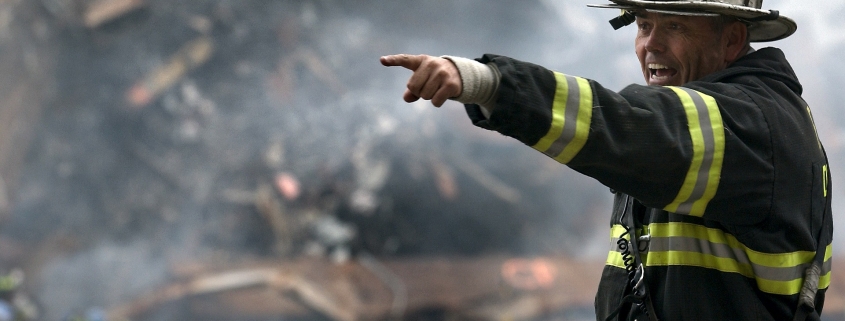What to Do After a Fire at Your Company
A fire has just hit your company and is definitely one of the most dramatic moments in the life of any business owner. The flames have been extinguished and the smoke has already dissipated, but now what?
No one expects a catastrophe, though there are ways to prevent further damage when that happens. The important thing is not to let the fire damage your business due to loss of productivity and revenue.
A fire in your workplace is a horrible event, but it does not mean the end of your company. This may even mean a chance to update some procedures and improve security standards. It is important to stay calm and follow some basic steps immediately after the incident.
1. Document the damage
The moment the fire department says it is safe to enter the building, start documenting and gathering information about the damage. A building that experiences a fire is often a chaotic scene, but you will need to avoid mistakes in the processes that follow – especially with your insurance company.
Start by collecting all the disaster-related bills and expenses. Create a file and keep full records of all phone calls, budgets, and reconstruction decisions. Do not sign or approve anything at the moment.
Take lots of pictures of the damage, from all sides and in detail. Be sure to photograph furniture, machinery, and any equipment touched by the flames before removing them from the building. A complete inventory of damaged material is important when the insurance company enters the scene.
2. Secure the scene
With the help of local authorities, make sure the scene is stable and safe. Empty and half-destroyed buildings are sometimes considered abandoned and targeted by thieves and vandals. Police can help for a while, but it may be needed to provide private security if valuable assets are still in place.
You can also restrict the entrance by closing all possible outside entrances with planks or bricks, such as broken windows, broken doors, or partially collapsed walls. Tarps are a cheaper option to replace a compromised roof and avoid leaks that could damage building conditions.
3. Pause Your Utilities
The fact that the fire is extinguished does not mean that the dangers are over. Prevent further damage by turning off all utilities. Gas and electricity can be turned off on the meter, but be sure to close the water valve to prevent leaks. Only turn on the utilities only after the building is inspected and put into use.
4. Contact your Insurance Company
Your insurance company will analyze the damage and discuss the situation, in addition to advising you on what you cover. Depending on what is damaged, you can benefit from different policies:
Commercial Property Insurance – This coverage helps with the cost of fire to your property and equipment (such as tools, inventory, and furniture).
General Liability Insurance – If your business operates a rental space, you can file a general liability insurance claim for the damage caused.
Business Interruption Insurance – Depending on the nature of the fire, you may be able to use your business termination insurance to replace lost revenue. Business termination insurance covers operating expenses, payroll, and even the costs of moving to a temporary location if needed.
5. Contact all parties involved
In addition to local authorities, you will also need to communicate the situation to all your employees, customers, suppliers, vendors, and, if applicable, your partners or shareholders. This sharing of information is very important to create an image of transparency and trust.
In a second step, notify the post office of the alternate address to forward your correspondence and update your website to inform customers that you will be temporarily out of business. This will provide understanding and support from your customers.
6. Initial after fire cleaning
Not all fires completely destroy the building. Depending on the severity of the incident, you may be able to start the cleaning process yourself – but always with the instructions of the fire department.
Once your entrance to the building is authorized, you can start cleaning furniture, appliances, and items that were not damaged. Take them to a safe place. They are probably affected in some way, if not by soot, water, fire, and smoke which will need the right cleaning and maintenance.
Soon, it will also be needed to clean the building itself. Fire and smoke affect floors and walls differently, often requiring some specific cleaning. Do not forget about HVAC systems, which can carry harmful waste.
7. Establish Fire Recovery and Renovation Plans
A fire can destroy the business you took years to set up in minutes. Unfortunately, the recovery will not be that fast. It will take some time for all the processes, from getting insurance coverage to cleaning and rebuilding the site.
This is the right time to be realistic but also motivated. It makes no sense to rush the repair process to try to get back to work faster because it will cost you more. Try to design recovery and renovation plans according to your finances and needs, maybe resume activities little by little.
8. Prevent your business from turning to smoke
According to the Federal Emergency Management Agency (FEMA), more than 40% of companies are unable to recover from a disaster. But this data should not leave you pessimistic. Rather, it should motivate you to invest in the right prevention. You can not predict or control natural disasters, but you can create a backup plan and be prepared to cope with recovery.
This is one of those cases where what you do before is usually more essential than any decision you can make after the incident. So try to buy new insurance coverage, or boost your existing policy, to help your business get back on track even stronger than before.



